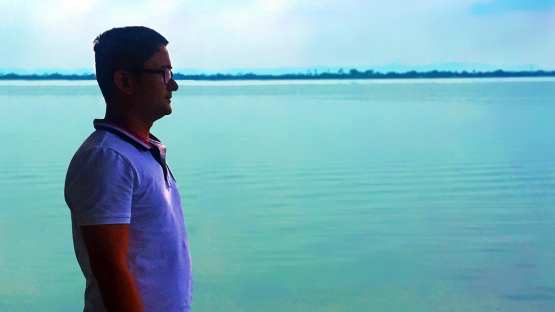Tacloban, Philippines — When environmental chemist Wilfren Clutario wanted to understand the level of pollution caused by the world’s most severe typhoon, which claimed over 6000 lives and devastated two-thirds of Tacloban in 2013, he had a problem: there was no baseline data available.
“We could measure the concentration of nitrates and organic matter in the sea, but we did not know how much of it was natural and how much was the result of contamination by the typhoon,” said ClutarioAt the time, he was a researcher at Eastern Visayas State University, using conventional techniques to measure the concentration of different compounds at sampling sites. The gusting winds of Typhoon Haiyan, which hit the city exactly five years ago on 7 November 2013, that carried debris containing organic materials, contaminants, and human and animal corpses from the land into the ocean.
Researchers and policymakers were unsure if the ocean would be able to cope with the volume of pollution that entered the ocean during the typhoon, which could have transformed the area into a dead zone, lasting for decades. They needed to understand what was pollution and what was natural to know whether any measures were needed to assist the ocean in ‘digesting’ the debris so that it could return to its natural state of equilibrium, explained Clutario.
When Clutario presented his research problem at a conference in 2015, Raymond Sucgang, a senior researcher from the Philippine Nuclear Research Institute (PNRI) with expertise in the use of isotopic techniques to characterize water pollution, sat on the edge of his seat, eager to offer a solution to Clutario’s dilemma. They have been working closely together ever since. “Ours is like a professional marriage made in heaven,” Sucgang said.
Not only has Clutario learned how to use isotopic techniques to characterize the source of nitrogen and organic matter and its movement to the ocean, with help from the PNRI and the IAEA, in cooperation with the Food and Agriculture Organization of the United Nations, but he has also added the use of isotopic techniques to the curriculum at the Philippine Science High School—East Visayas Campus, where he teaches. He has since supervised several research projects by senior high school students on the use of these techniques in characterizing contamination in fresh water bodies in the area.
“We have no office in Tacloban, but we have Wilfren,” Sucgang said. And indeed, on a sunny day last August, one of the school's classrooms was filled with researchers from the city and the province who participated in a one-day PNRI workshop on the use of nuclear and isotopic techniques in a wide range of areas.
“Nuclear techniques can do so much, but most people, even in the scientific community, don’t know it,” said Clutario, who had participated in IAEA-led training courses in Australia and Malaysia to broaden his own knowledge of the subject. “When people, even researchers, hear the term ‘nuclear’, they only think about nuclear power, but there is so much more to it.”
Spreading the use of nuclear applications in the scientific community is central to the mission of the PNRI, which looks to researchers like Clutario to assist, said Director Carlo A. Arcilla. “We are conducting workshops across the country to educate scientists.”







